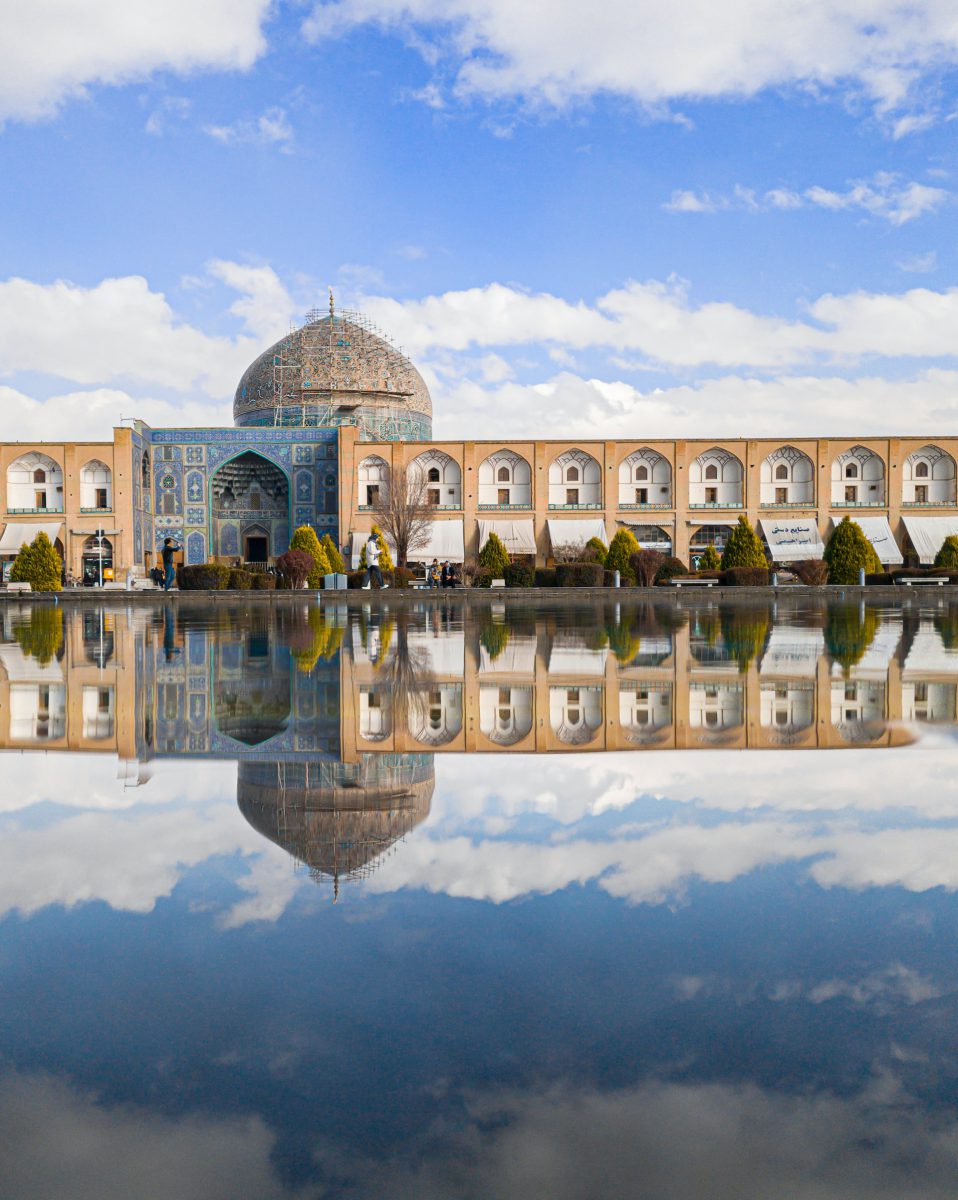Table of Contents
Sheikh Lotfollah Mosque stands as a testament to Iran’s architectural mastery and artistic excellence. With its unique decorations and stunning architecture, this mosque has captivated both domestic and foreign tourists alike. Located in Naqshe Jahan Square, Isfahan, this magnificent structure is a must-visit attraction that showcases the beauty and grandeur of Islamic art.
History of Sheikh Lotfollah Mosque
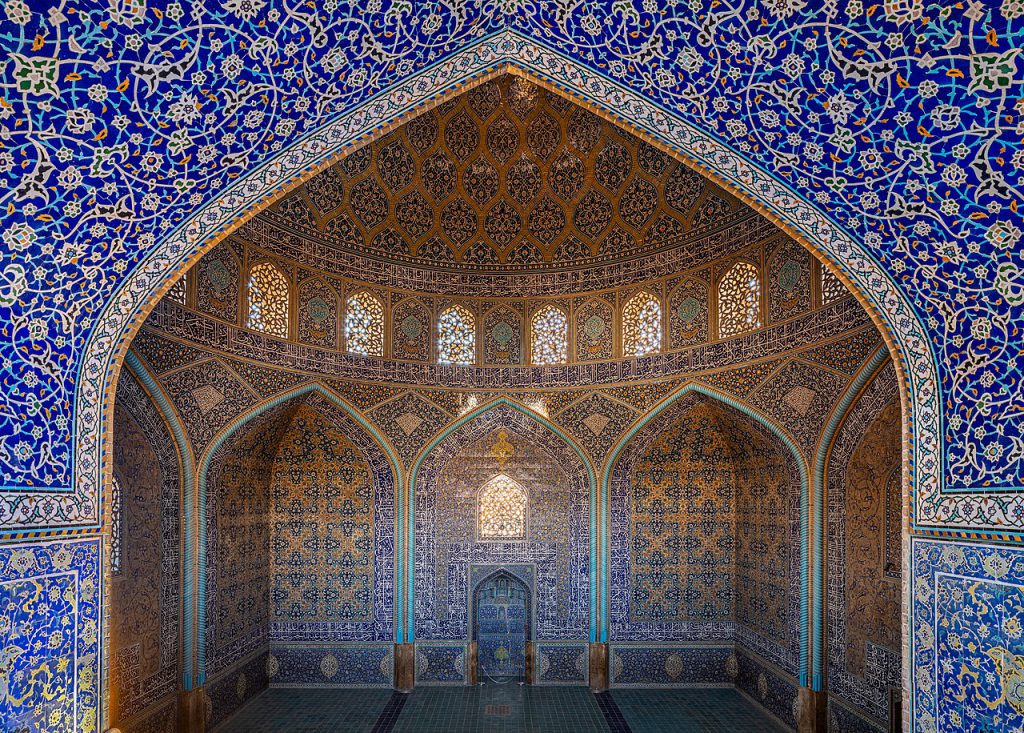
During the Safavid era, Isfahan flourished as the capital city, witnessing the development of remarkable architectural gems such as Chaharbagh Street and Naqshe Jahan Square. It was during this period that Shah Abbas, the great Safavid ruler, commissioned the construction of Sheikh Lotfollah Mosque.
Over 18 years, Mohammad Reza Esfahani brought this vision to life, crafting a magnificent structure that would serve as a place of worship exclusively for Shah Abbas and the royal family.
Who is Sheikh Lotfollah
Sheikh Lotfollah, a distinguished Shiite scholar, was invited by Shah Abbas I to live in Iran, specifically in Isfahan. With his profound knowledge and devotion, Sheikh Lotfollah played a significant role in the religious education and spiritual guidance of the Safavid court. As a gesture of honor and respect, Shah Abbas built the Sheikh Lotfollah Mosque to serve as a place of worship, education, and prayer under Sheikh Lotfollah’s guidance.
Architecture of Sheikh Lotfollah Mosque
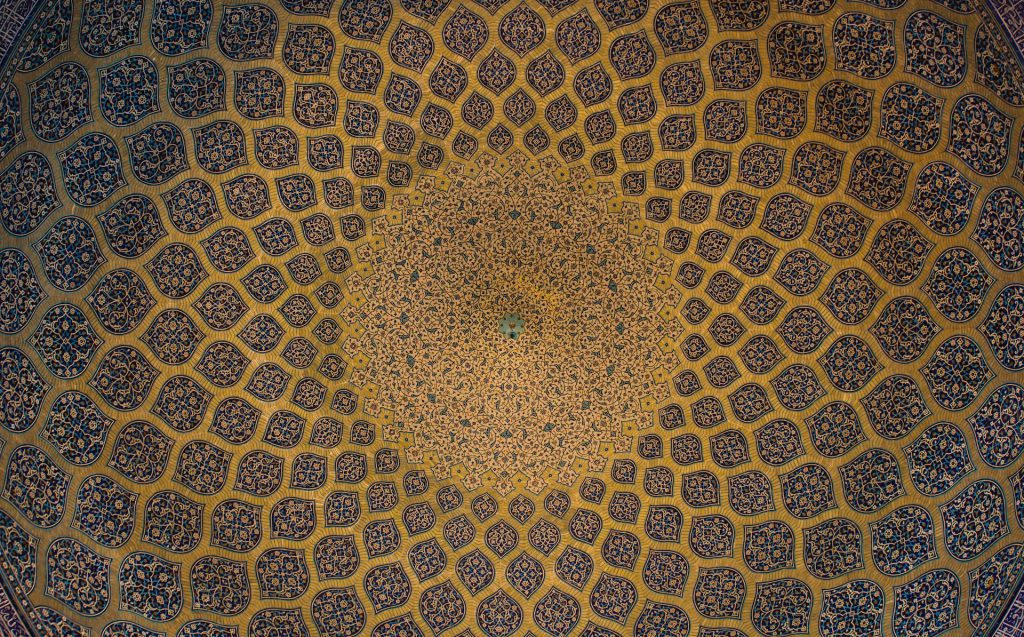
Sheikh Lotfollah Mosque, a national treasure of Iran, was included in the prestigious list of national works on January 15, 1310. Designed by the renowned architect Professor Mohammad Reza Isfahani, this mosque stands as a masterpiece of Safavid-era architecture, showcasing the best of Isfahani style. Its exquisite tiling, intricate decorations, and impeccable proportions have solidified its place as one of the most remarkable sights in Isfahan.
The architectural design of Sheikh Lotfollah Mosque showcases the brilliance of Isfahani architects. Its dome, considered one of the most beautiful in the world, astounds visitors with its elegance and harmonious proportions. Unlike many other mosques, this mosque does not have an entrance hall. This deliberate omission, coupled with a 45-degree rotation, maintains the symmetry of Naqshe Jahan Square while directing worshippers towards the Qibla.
Different Parts of Sheikh Lotfollah Mosque
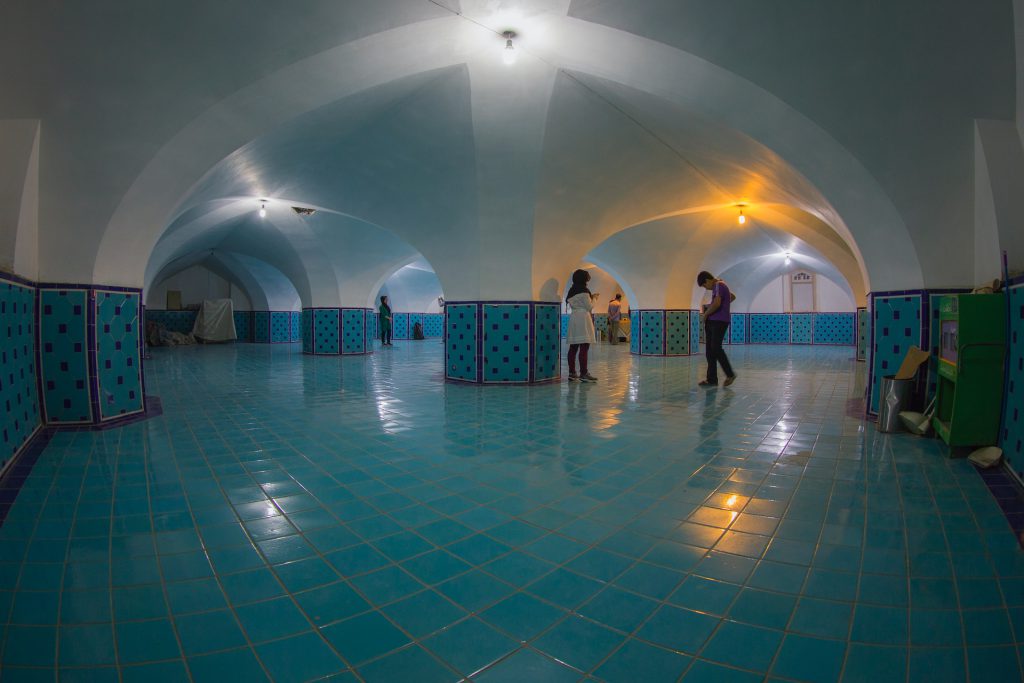
Mystery of the Missing Minaret
One striking feature that sets Sheikh Lotfollah Mosque apart from others is the absence of a minaret. Typically, minarets serve as prominent elements of mosque architecture, but in the case of Sheikh Lotfollah Mosque, their omission carries symbolic and historical significance. As the mosque was exclusively used by Shah Abbas and the royal family, there was no need for a minaret to call ordinary worshippers. This absence, while notable, contributes to the mosque’s distinct character and charm.
Majestic Dome
The dome of Sheikh Lotfollah Mosque stands as an architectural marvel. Composed of two connected shells, it reaches a height of approximately 32 meters above the ground. The dome’s graceful proportions and intricate design captivate onlookers. Adorned with mosaic tiles and surrounded by 16 mesh windows, the dome exudes an ethereal glow when sunlight filters through. Its color-changing effect throughout the day, ranging from pink at dawn to cream at noon and brick at sunset, adds to its captivating allure.
Enchanting Mihrab
The mihrab of the mosque represents another pinnacle of artistic brilliance. Intricately tiled and adorned with delicate moqrans, it mesmerizes visitors with its beauty. The mihrab’s toothed arch, embellished with shell beads and plant motifs, stands as a testament to the meticulous craftsmanship of the Safavid period. Inscriptions, including verses from the Quran and poems attributed to Sheikh Baha’i, complete the splendor of this sacred space.
Underground Corridor
Underneath Naqshe Jahan Square lies an underground corridor that once connected Sheikh Lotfollah Mosque with the Ali Qapu Palace. This passageway served as a means for the royal court, particularly women, to traverse between the two structures. Although the corridor is no longer intact due to the construction of a reservoir, efforts have been made to revive this historical connection, potentially reestablishing the link between the mosque and the palace.
Lighting Design
The lighting design of the mosque is a testament to the mastery of Mohammad Reza Bana Esfahani. The deliberate manipulation of light creates a unique spiritual atmosphere within the mosque. By strategically placing mesh windows under the dome, the light undergoes refractions and creates a soft, subdued glow. This careful orchestration of light complements the mosque’s curved motifs, soothing colors, and tranquil ambience.
Captivating Tiling
The tiling of Sheikh Lotfollah Mosque showcases the intricate craftsmanship of the Safavid era. From the exterior to the corridor, the tabernacle, and the mihrab, every detail is meticulously adorned with stunning mosaic tiles. The use of seven-color tiles, delicate moqrans, and floral motifs elevates the mosque’s aesthetic appeal. The interplay between light and tiles, especially within the dome, creates a mesmerizing visual spectacle. This unique tiling is a testament to the exceptional artistry and dedication of the Safavid craftsmen.
Restoration of Sheikh Lotfollah Mosque
Over the years, Sheikh Lotfollah Mosque has undergone restoration to preserve its grandeur. Recent restoration projects faced scrutiny due to the prominence and color variations of certain parts of the mosque. However, experts assured that these restoration endeavors were conducted meticulously, following scientific methods and adhering to the original design. With time and exposure to rain, the restored areas will naturally blend with the rest of the structure, maintaining the mosque’s architectural integrity.
As you prepare to embark on a journey to Sheikh Lotfollah Mosque, may this article serve as a guide to the wonders that await you. Immerse yourself in the breathtaking beauty of this architectural masterpiece, appreciate its intricate details, and revel in the spiritual ambience that permeates its sacred halls. Sheikh Lotfollah Mosque stands as a testament to Iran’s rich cultural heritage, captivating the hearts and minds of all who are fortunate enough to experience its splendor.
Where is Sheikh Lotfollah Mosque
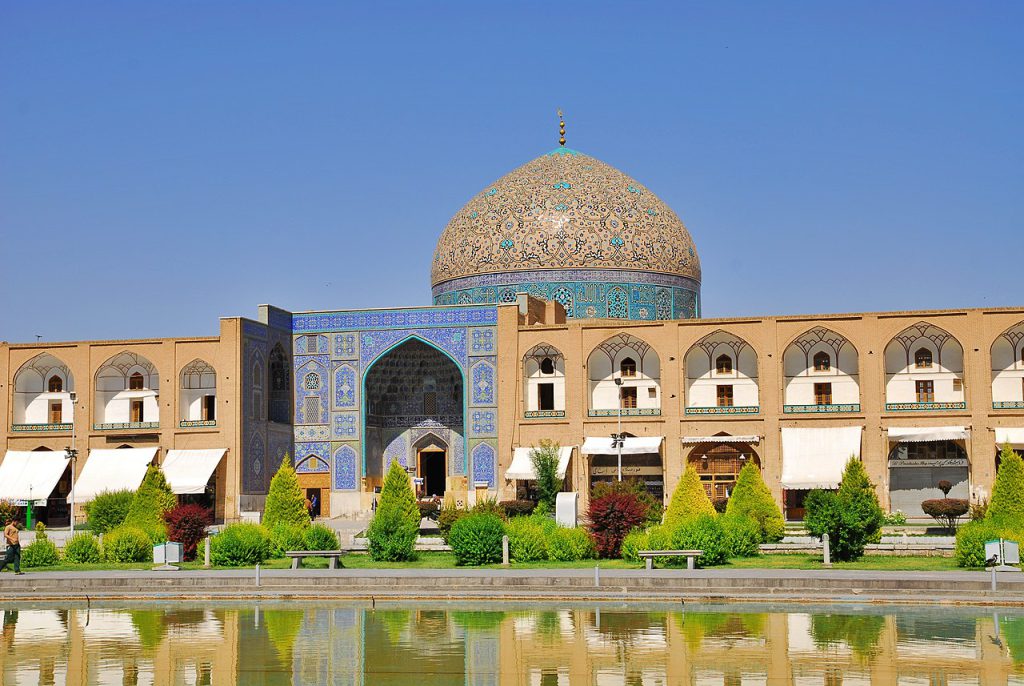
Situated in the city of Isfahan, Sheikh Lotfollah Mosque graces the iconic Naqshe Jahan Square, also known as Imam Square. Its central location makes it easily accessible and a prominent feature of the city. Visitors can explore the mosque and its surroundings, including other attractions such as the Shah Mosque, Ali Qapu Palace, and Qaysarieh Sardar, all within the vicinity of Naqsh Jahan Square.
How to Get to Sheikh Lotfollah Mosque
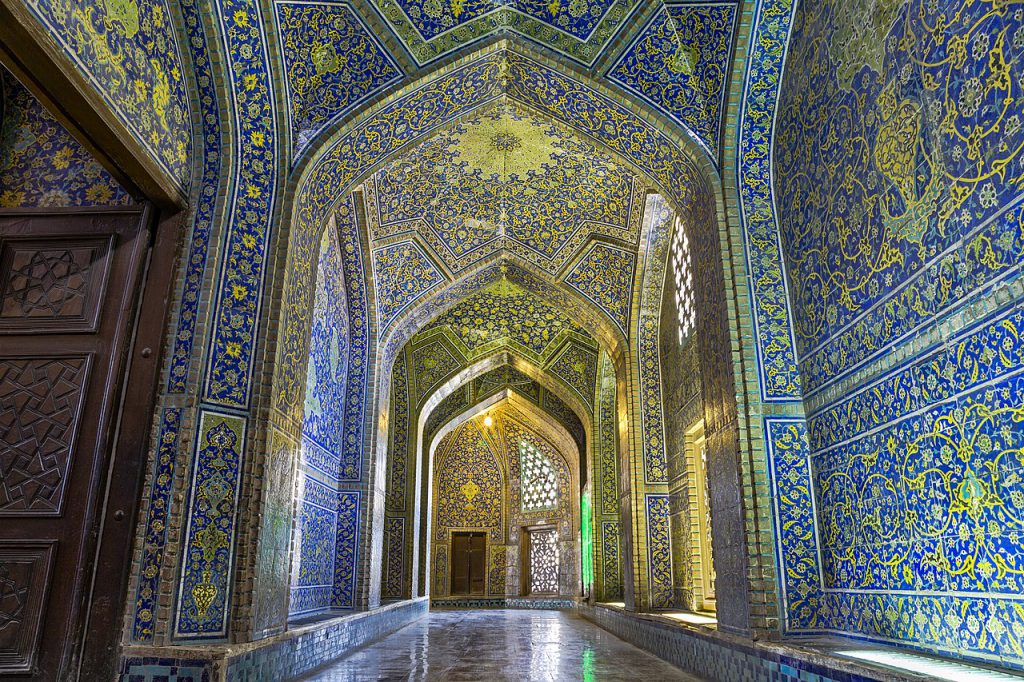
By Car
Travelling to the stunning Sheikh Lotfollah Mosque is a breeze, no matter your mode of transportation. If you’re driving, convenient parking is available on Ostandari Street, adjacent to the mosque’s west wall. Alternatively, you can find additional parking east of the Shah Mosque, making it easy to hop out and soak in the architectural beauty that awaits you.
By Public Transportation
For those relying on public transport, the Takhti Metro Station is your best bet if you’re coming from the airport or a bus station—just a brisk 20-minute walk will lead you to the mosque. If you prefer a leisurely stroll, consider wandering from nearby gems like Hasht Behesht Palace or the enchanting Chehel Sotoon Palace. And if buses are more your style, catch one that stops at either Central Library or Khorshid Hospital to get you closer to this magnificent site.
Working Hours of Sheikh Lotfollah Mosque
Sheikh Lotfollah Mosque welcomes visitors during specific hours that allow you to fully appreciate its breathtaking beauty. The mosque opens its doors from 9 AM to 12:30 PM, providing a serene morning atmosphere perfect for exploring its intricate tile work and architectural marvels.
After a brief afternoon break, the mosque reopens from 2 PM to 6 PM, giving you ample time to wander through its stunning corridors and soak in the spiritual ambience.
Recommended Sightseeing Time of Sheikh Lotfollah Mosque
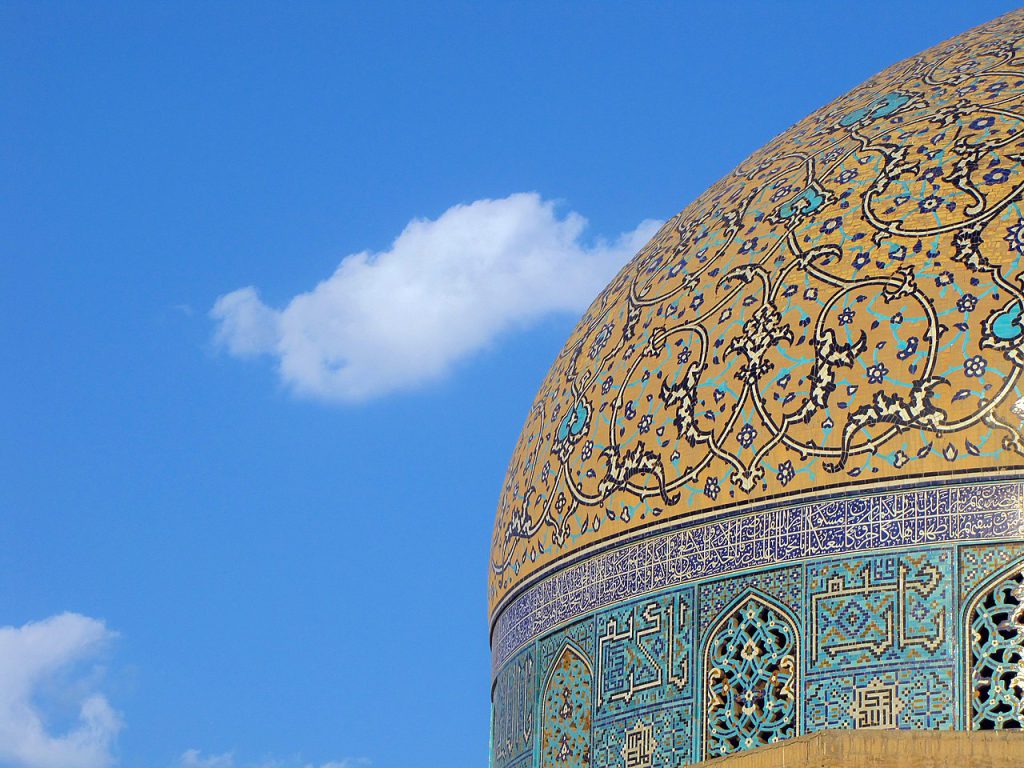
To truly appreciate the exquisite details and serene atmosphere of Sheikh Lotfollah Mosque, allocating about an hour for your visit is ideal. This timeframe allows you to explore the mosque’s stunning architectural features, from its intricate tile work to the mesmerizing dome. Take your time to absorb the artistry and spiritual essence that envelops this remarkable site.
Where to Eat Near Sheikh Lotfollah Mosque
Azadegan Café
Azadegan Café is a culinary highlight just a stone’s throw from Sheikh Lotfollah Mosque, celebrated for its authentic Persian dishes that reflect the rich flavors of Isfahan. The café’s inviting atmosphere is complemented by its beautifully designed interior, making it an ideal spot for both locals and tourists. Diners can indulge in a variety of traditional meals, from aromatic saffron-infused rice dishes to succulent kebabs, all prepared with fresh, local ingredients. The café’s commitment to quality and authenticity has earned it a reputation as one of the best places to savor Isfahan’s culinary delights.
Roozegar Café
For a more laid-back experience, Roozegar Café offers a cozy ambience where visitors can enjoy light snacks and refreshing beverages. This café is perfect for those looking to relax after a day of exploring the mosque and the surrounding attractions. With a menu featuring a mix of Iranian appetizers and delightful coffee options, Roozegar Café provides a casual setting to unwind while soaking in the local culture. Whether you’re in the mood for a hearty meal or a quick snack, both Azadegan and Roozegar cafés promise to enhance your visit to this historic area.
Where to Stay Near Sheikh Lotfollah Mosque
Abbasi Hotel
Nestled within the vibrant heart of Isfahan, the Abbasi Hotel stands as a testament to the city’s rich cultural heritage. This 300-year-old building, once a caravanserai during the Safavid era, has been meticulously restored to its former glory, offering guests a unique blend of historical charm and modern luxury.
The hotel’s stunning architecture, featuring intricate tilework, elegant courtyards, and serene gardens, creates an atmosphere that transports visitors back in time. With 225 well-appointed rooms and suites, the Abbasi Hotel caters to a range of preferences, from standard rooms with city views to luxurious suites overlooking the hotel’s lush gardens. Each accommodation is equipped with modern amenities, ensuring a comfortable and convenient stay.
Piroozy Hotel
For travelers seeking a more intimate and authentic experience, the Piroozy Hotel offers a cozy alternative to larger hotels. Located just a short walk from the Sheikh Lotfollah Mosque, this traditional guesthouse provides guests with a glimpse into Isfahan’s local culture and hospitality.
The hotel’s rooms are tastefully decorated with Persian-inspired furnishings and feature amenities such as private bathrooms, air conditioning, and free Wi-Fi. Many rooms offer views of the hotel’s charming courtyard, creating a peaceful and serene atmosphere.
Other Attractions Near Sheikh Lotfollah Mosque
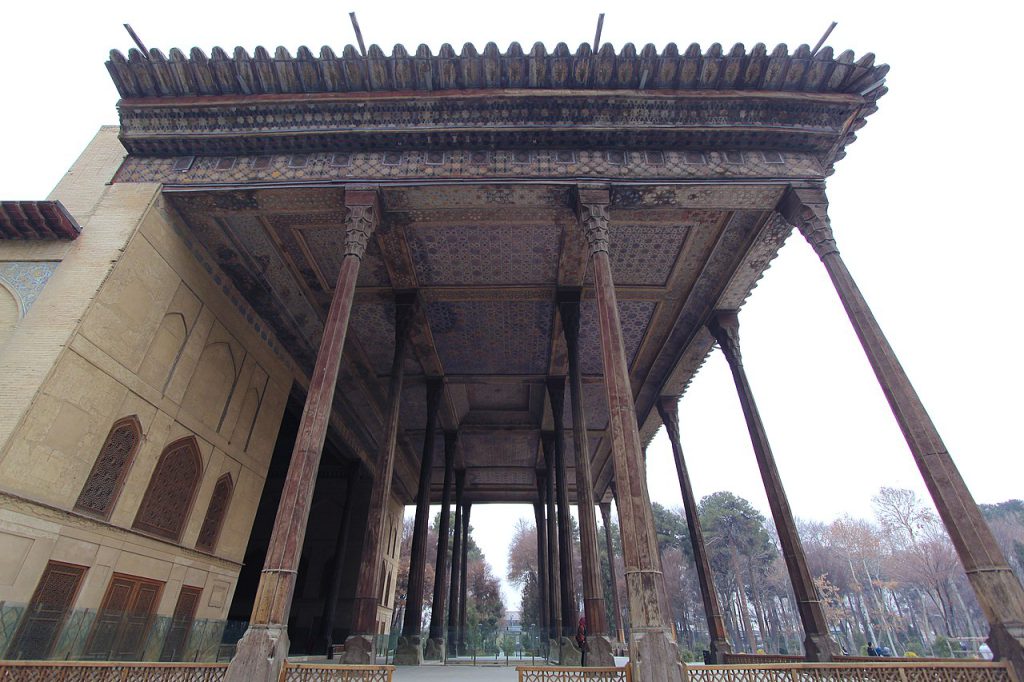
Just a leisurely stroll from the mesmerizing Sheikh Lotfollah Mosque, visitors can immerse themselves in the rich historical tapestry of Isfahan.
Chehel Sotoun Palace
The Chehel Sotoun Palace beckons with its enchanting gardens and stunning frescoes. This UNESCO World Heritage site, known as the “Forty Columns” palace, showcases the architectural brilliance of Shah Abbas II, with its reflective pool creating an illusion of grandeur that captivates all who visit.
Si-o-Se Bridge
A short 20-minute walk leads to the iconic Si-o-Se Bridge, a marvel of Persian engineering. Spanning the Zayandeh River, this bridge is not only a vital transportation link but also a picturesque spot for leisurely walks and photography. As the sun sets, the bridge comes alive with lights reflecting on the water, creating a magical ambience.
FAQs about Sheikh Lotfollah Mosque
Q1: Where is Sheikh Lotfollah Mosque located?
A1: Sheikh Lotfollah Mosque is located in Isfahan, Iran. It is situated on the eastern side of Naqsh-e Jahan Square, also known as Imam Square.
Q2: Who built Sheikh Lotfollah Mosque?
A2: The mosque was commissioned by Shah Abbas I, the ruler of the Safavid Empire, and was constructed between 1602 and 1619 during his reign.
Q3: What is the significance of Sheikh Lotfollah Mosque?
A3: Sheikh Lotfollah Mosque holds great historical and architectural significance. It is renowned for its intricate tilework, delicate calligraphy, and mesmerizing dome. The mosque represents the rich cultural and artistic heritage of the Safavid dynasty.
Q4: What is the architectural style of Sheikh Lotfollah Mosque?
A4: The mosque is an excellent example of Persian Islamic architecture. It features a unique and innovative design, characterized by a simple entrance facade and a beautiful domed chamber.
Q5: Why is Sheikh Lotfollah Mosque also known as the “Pink Mosque”?
A5: The mosque is often referred to as the “Pink Mosque” due to the pinkish hue of its dome and tiles. However, it’s important to note that the color varies throughout the day, changing from pale pink in the morning to a deeper shade in the afternoon.
Q6: Can visitors enter Sheikh Lotfollah Mosque?
A6: Yes, visitors are allowed to enter Sheikh Lotfollah Mosque. However, please note that it is an active religious site, so visitors are required to dress modestly and respect the sanctity of the space.
Q7: Are there any specific visiting hours for Sheikh Lotfollah Mosque?
A7: The mosque is generally open to visitors during regular hours, usually from early morning until late afternoon. However, it’s always advisable to check the local schedules and timings, as they may vary based on prayer times and other events.
Q8: What are some notable features of Sheikh Lotfollah Mosque?
A8: Sheikh Lotfollah Mosque is renowned for its impressive architecture and intricate details. Some notable features include the stunning dome, the mosaic tilework adorning the exterior and interior walls, and the remarkable peacock design on the dome’s interior.
Q9: Is there an entrance fee to visit Sheikh Lotfollah Mosque?
A9: Yes, there is usually a small entrance fee to visit Sheikh Lotfollah Mosque. The fee may vary depending on whether you are an international visitor or a local resident.
Q10: Can photography be done inside Sheikh Lotfollah Mosque?
A10: Photography is generally allowed inside the mosque, but it is important to be respectful and mindful of other visitors. Flash photography is usually prohibited to preserve the delicate artwork.
Last Words: Discover the Best of Sheikh Lotfollah Mosque with a Customized Tour
Sheikh Lotfollah Mosque is a great example of Iran’s impressive architecture and art. Its beautiful designs and architecture attract many visitors from both Iran and abroad. Situated in Naqshe Jahan Square in Isfahan, this stunning mosque is a must-see for anyone who wants to appreciate Islamic art.
If you’re planning to visit Iran and want to truly enjoy the beauty of Sheikh Lotfollah Mosque, consider traveling with a Customized tour. To Iran Tour specializes in providing exceptional Iran tours and travel packages. Our professional team designs each itinerary to match your preferences, whether you’re interested in culture, history, or simply soaking in the stunning architecture.
We are here to help you have a great experience in Iran, making your journey unforgettable. Explore our range of Iran Tours and let us create the perfect trip for you!

